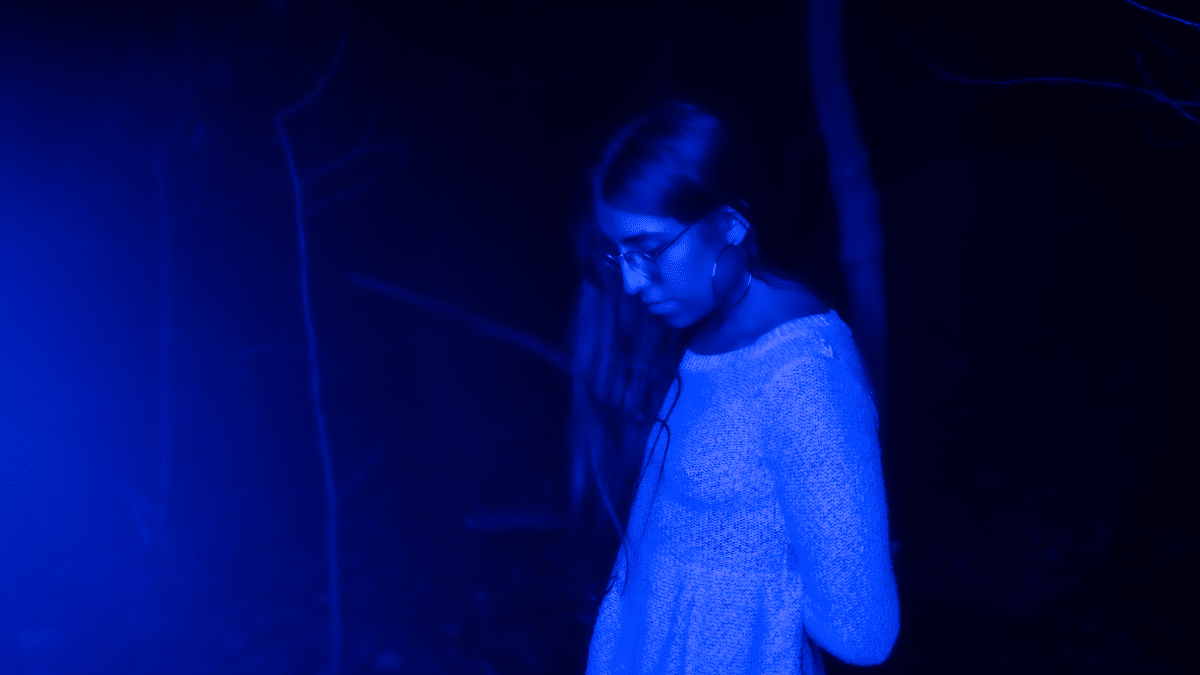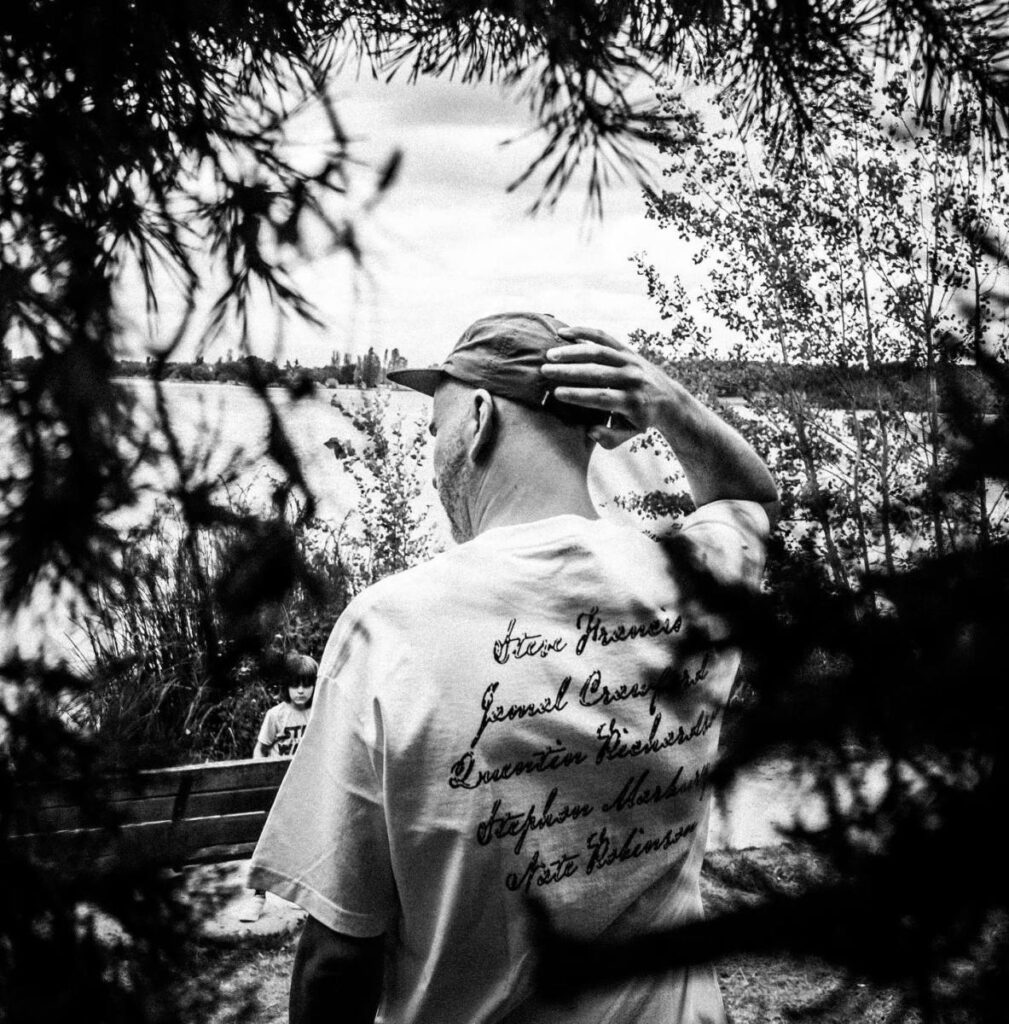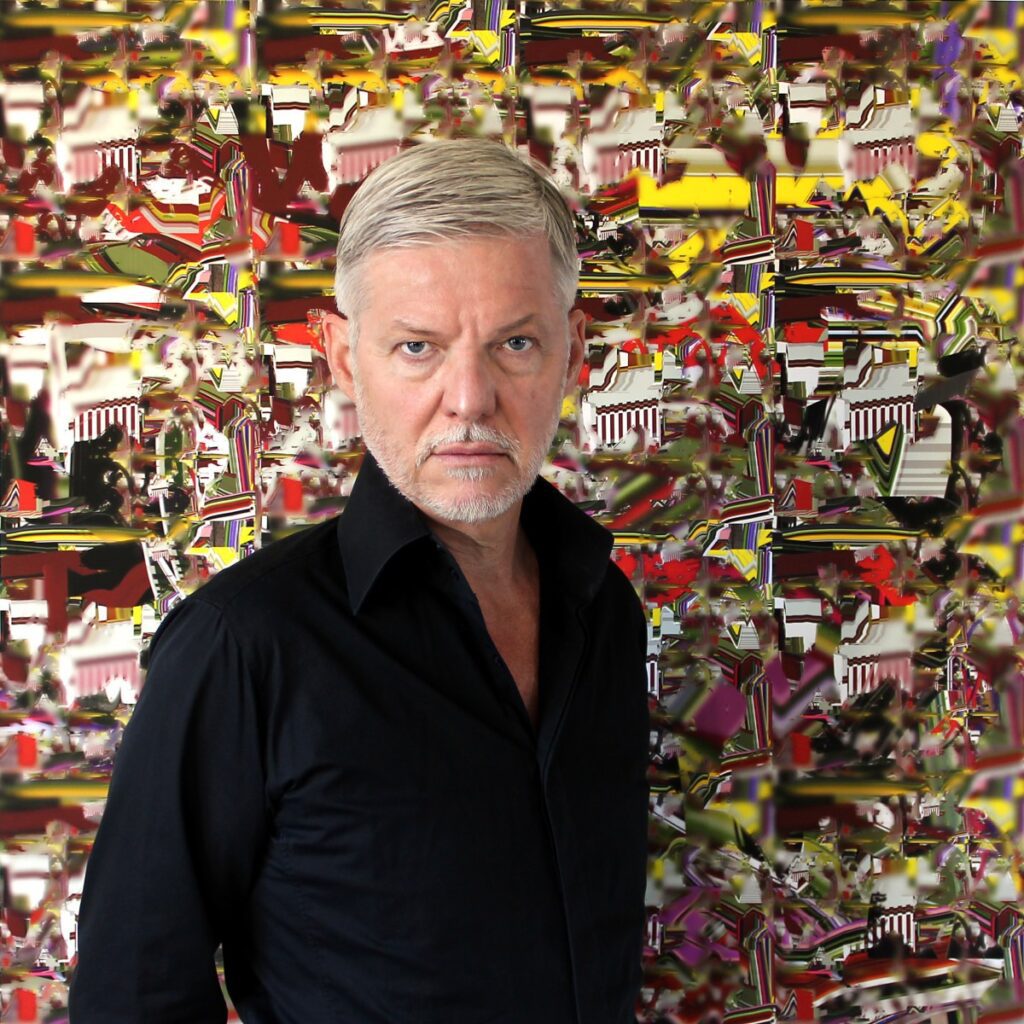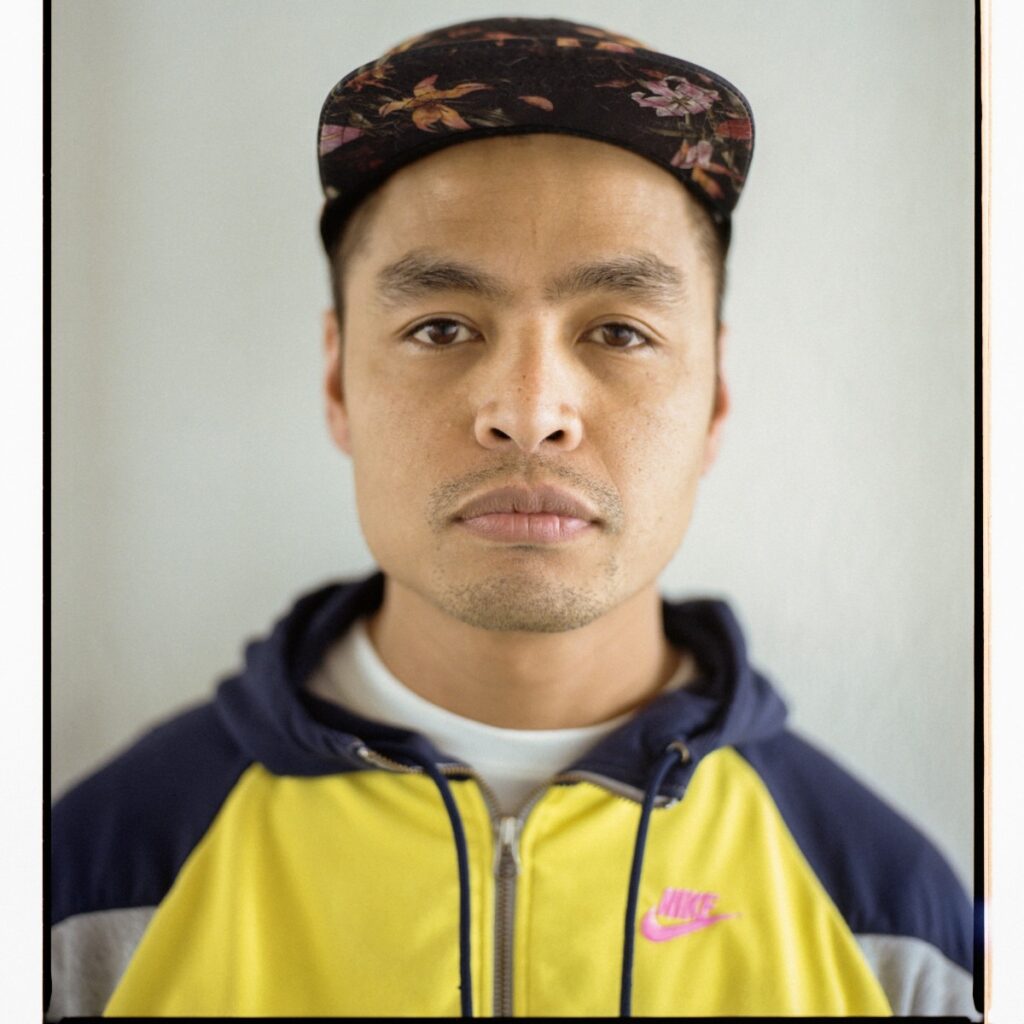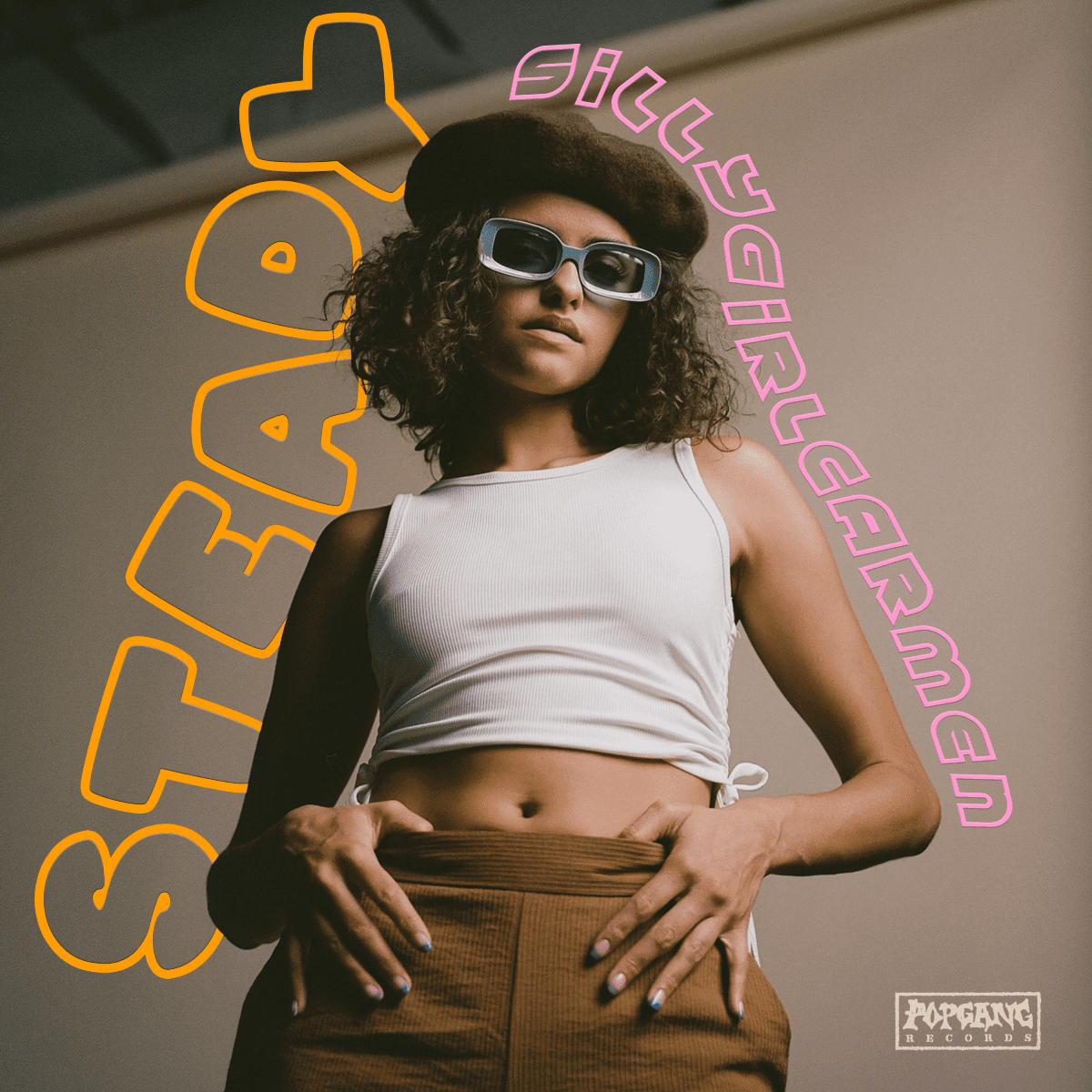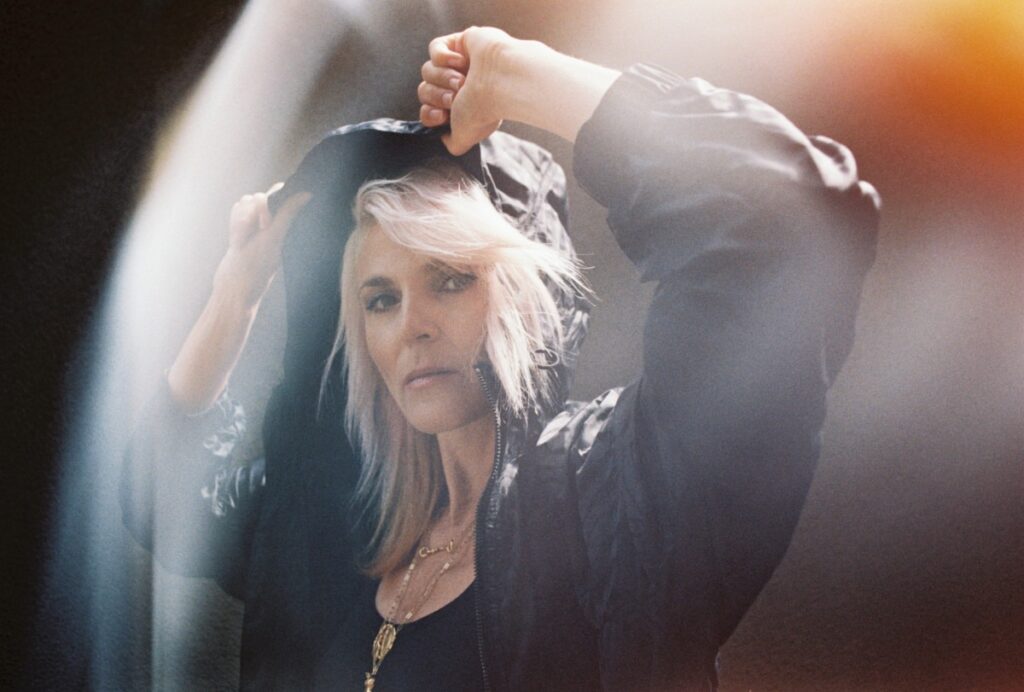Brooklyn-based ambient-electronic composer Rachika Nayar has released her new album Our Hands Against The Dusk on NNA Tapes. Her career spans scores for films like the 2019 feature So Pretty, plus directing her own music videos and now her debut full-length album.
The album is a textured and detailed examination of the edges of what ambient music can and should be. There are bubbling, subterranean electronics on “The Edges” that mix with cinematic choir. Shimmering synths crescendo above soft strings, guitar loops, murky fx and piano that often floats in the air like a breeze on a warm summer day. There are moments of darkness like on the haunting eight minute and eight second “Aurobindo” that sucks you into its dark embrace. Our Hands Against The Dusk ends on the beautiful cello and piano composition “No Future” that maybe gives some hope for a future even as humanity does its best to destroy it. It blends all of these ideas and sounds together quite flawlessly for an eight track record.
To get a better idea about the instruments, creative concepts and musical ideas behind this album, we asked Nayar to break down the album, track-by-track. For a new Director’s Cut feature, she goes into some of production behind each track, influences from Brian Eno, Hiroshi Yoshimura and others, plus how friends had their own feedback.
Listen to the album now as you read and grab your copy of the record on Bandcamp with a limited edition cassette here.
1. The Trembling of Glass
Despite being the first on the album, this song is actually the last I wrote chronologically. I arranged nearly the entire thing from processing one guitar progression into a bunch of different sounds—which then reveals itself in its raw form in the outro. In that way, the song feels especially representative of this wider duality on the album between the processed textures and their original instrumental sources.
I didn’t set out to make a record with that (or any) particular framework in mind. Rather, I just never felt I could express more nuanced parts of my emotional life with just the guitar loops that form the foundation of much of my songwriting, until I started reworking them with digital tools. Over time, that method became a certain “home” for me, and I began applying it to different instruments like piano and cello. In the past, I’d played in a few of my dear friends’ projects that ranged between queercore, post-rock, darkwave, etc along with the digital production I do. My ambient-electronic methods feel like they let me pull these many impulses together.
2. Losing Too is Still Ours
“… / and even forgetting still has a place in the kingdom of transformation.” The poem from which I took this title became my favorite of Rilke’s at a time in my life when loss and forgetting were especially on my mind. His writing often deals with how absence is as constitutive of our connections and personhood as presence. When I was younger, this felt healing for me in learning to embrace the gaps between people, within communication, and within our relationships to ourselves, rather than seek an impossible fantasy of unity or permanence.
Conversely to the previous track, this is the first song on the album I finished, back in 2017. My good friend Ricky (YATTA) recorded these incredibly visceral vocals one night at my apartment, and I pitch-shifted and time-stretched it into the melody you hear. The range of his voice thus takes on this immense, otherworldly, post-human character.
3. Marigolds & Tulsi
I see one aspect of my process on this album as tearing up an instrumental sample into a million pieces, and then putting those fragments through cycles of recombination. This song feels like a favorite example of this. When I cut up a guitar phrase, stretch it, and layer it at different speeds and octaves, so many new melodies and timbres suddenly reveal themselves. It’s as if it was all latently hiding in there. Brian Eno’s interpretation of “Canon in D” felt influential for me in thinking about music-making in that way. In it, he proportionally slows each instrument to a different pace, so that the different lines come in and out of “phase” with one another.
All of a sudden, the original arrangement bursts into so many new, constantly evolving, and really achingly beautiful harmonies. When the original notes work together so well, sending a musical idea through this kind of prismatic metamorphosis can create really moving and surprising results. These processes feel to me like exploring a single idea through multiple and multiplying perspectives—seeing one thing in all its different realities and selves.
4. The Edges + 5. New Strands
On this album, I used a Korg M1 for almost all the synth sounds that I layer with the processed acoustic recordings. I think it’s most visible on these songs—especially the M1’s airy vocal patches, which are some of my favorite synth sounds ever made. They’re both angelic and very haunting. After I finished this album, I started recognizing this synth on so many of my favorite 90s records, like Hiroshi Yoshimura’s Wet Land.
6. A Burning Plain
A while ago, I had this really vivid dream I was a passenger on a big Boeing airliner. I was looking out the window as it took off, and watched as the wings immediately caught fire. It came crashing down in this horrific blaze. I stood up in a prairie in flames, and wandered around the wreckage. I wrote it down right when I woke up. Later that same week, my parents visited and (completely independently) mentioned how one of my great grandparents survived a flight in India back in the 60’s that crashed into a ditch right as it left the runway. I even found the newspaper headline for it in online library archives. It was such a strange synchronicity! I felt kind of shocked.
7. Aurobindo
Though I can give context for some titles and the songwriting process, it feels hard for me to write about the “meaning” of any one composition for this prompt. I don’t really think about these songs in that way! Whenever I try to dictate the significance of my music, I feel like I’m just bleeding it of its life force. I make music as a means of sitting with the abstracted, pre-verbal parts of my heart—going deep into that landscape and losing my way. And when I do that routinely over time, I think something genuine inevitably emerges.
This is obviously a really personal process in my life, related to some internal nexus of grief, joys, memories, political and individual histories. But nonetheless, though the songs are always in conversation with my own lived experiences, I don’t like reducing the former to the latter. I read Bhanu Khapil’s incredible book Ban en Banlieue earlier this year, and she relates how her friend Petra Kuppers, a disability activist, told her regarding her novel over coffee, “I’m sorry, but I’m not interested in your story. I’m not interested in where you are from … I am not interested in disclosure, I am interested in discharge.” That really resonated with me.
I guess that’s a lot of lead-up for saying: This song takes its title from a family member’s moment of darshan at Sri Aurobindo’s Pondicherry ashram many years ago—a moment that means a lot to me. I don’t entirely know why that history feels so fitting here, but they’ve since passed away and I hope this piece honors them.
8. No Future
This final song originated in 2017 with an iPhone recording of me aimlessly playing around for hours on a piano. I created the full arrangement’s skeleton from putting the recording through a granular synthesizer that I “performed” in real-time using a MIDI controller. I then brought it to my friend Zeelie Brown’s apartment. She played these incredibly gorgeous cello lines from my vague direction, and I layered, cut, and pitch-shifted them into ensemble-esque chordal arrangements. There are also bits of digital MIDI cello I inserted as well, and I like how that further blurs the sonic distinction on this album between digital and acoustic.


